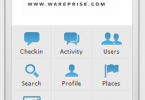Ever wondered how organizations keep their equipment running smoothly? The answer lies in remote equipment monitoring – a game-changer that helps businesses make the most out of their gear.
This practice has multiple benefits, from saving time to ensuring equipment runs non-stop, all while making operations smoother. Forget those manual inspections – you can set up alerts and dashboards to stay in the loop about potential issues.
Let’s dive into the perks of equipment monitoring and explore how it’s making a difference.
AI Generated Photo by Blue Willow
The Digital Leap: Acceleration Amidst Adversity
According to McKinsey, the pandemic acted as a catalyst for digital adoption. What would’ve taken a few years was squeezed into just a few months. Organizations went full-throttle, fast-tracking their digital game.
Customer interactions, supply chains, and internal operations got a digital makeover that was three to four years ahead of schedule. This digital drive is especially noticeable in industries like construction, logistics, service provision, and equipment manufacturing. Everyone’s getting the memo – digital transformation is essential.
The need to digitize is clear, and equipment monitoring is stepping up to the plate, offering a way to test the waters or dive right in. Either way, it’s a win-win, as equipment monitoring enhances service, keeps things running, and boosts efficiency.
What is Equipment Monitoring?
So, what’s this equipment monitoring everyone’s talking about? Imagine having software that helps you keep an eye on all your equipment, machinery, and other assets. This software gathers data on how these things are performing and gives you real-time insights. These insights help you fine-tune performance, minimize downtime, and nail your maintenance schedules.
With top-notch equipment monitoring and compatible software, you can track various parameters – like temperature, pressure, flow rate, vibration, and other key indicators – for each piece of equipment. The magic happens when the software analyzes this data, sending alerts and notifications if any of these indicators cross certain limits, which could mean potential issues.
Moreover, this software compiles detailed reports that offer a deep dive into equipment performance, maintenance history, and overall health. Armed with this knowledge, you can make informed decisions about repairs and maintenance, all while boosting overall equipment performance.
Integration is Key
But that’s not all. Equipment monitoring software doesn’t just exist in a vacuum. It’s designed to play nicely with other systems, like enterprise resource planning (ERP) and maintenance management systems (CMMS).
This integration offers a comprehensive view of equipment performance and maintenance needs. It’s like the glue that holds everything together. This integration has a ripple effect – it streamlines operations, cuts maintenance costs, and extends equipment life.
What are the Benefits of Remote Equipment Monitoring?
Now, let’s talk about the perks of remote equipment monitoring:
Maximized Uptime
Ever wonder why equipment goes down? With monitoring, you can track downtime trends and address root causes, ultimately keeping things up and running.
Efficient Service
When issues pop up, response times are faster. Teams can remotely diagnose and solve problems, saving valuable time. Diagnostic features and root cause analysis make troubleshooting a breeze.
Enhanced Utilization
Every piece of equipment has potential. Monitoring helps identify underused items, allowing for smart reallocation and cost savings.
Historical Insights
Looking back is a great way to move forward. Monitoring historic data reveals performance trends over time and offers a broader context by comparing different metrics.
Performance Data on Tap
Real-time performance data means better maintenance planning and improved reliability. You’ll know exactly how your equipment fleet is performing across safety and efficiency metrics.
Keeping an Eye on Health
Monitoring a machine’s health over time is crucial. Condition monitoring checks factors like temperature, vibration, and power against predetermined benchmarks, alerting you when things start to head south.
What Equipment Gets Monitored?
Equipment monitoring doesn’t play favorites; it covers all kinds of gear. From handheld power drills to massive reservoir tanks, everything’s fair game. Unpowered equipment gets tracked with battery-powered trackers to prevent theft and streamline inventory management. Powered gear benefits from optimization insights before decisions on buying or renting new equipment. Heavy equipment stays out of the shop longer thanks to remote access and condition monitoring, avoiding sudden breakdowns and costly repairs.
How Is Equipment Monitoring Software Integrated?
Now, the nitty-gritty of incorporating equipment monitoring software. Think of it as fitting a new piece into a puzzle. It becomes part of your existing technology setup – industrial control systems, Supervisory Control and Data Acquisition (SCADA) systems, or Internet of Things (IoT) platforms. Data transmission happens in real-time through wired or wireless networks, giving you a heads-up on equipment issues.
Here’s the process in a nutshell:
Installation
The software meshes with your current tech framework. Setting it up might need a helping hand, so make sure the solution provider offers assistance or clear instructions.
Data Collection and Analysis
Once set up, the software collects equipment data and shoots it to a central hub for analysis. Some solutions offer extra tools to build custom integrations, giving you a more comprehensive view and control.
Solutions
The beauty of equipment monitoring software becomes evident as your setup takes shape. With a little planning, you’ll have a system that saves time, boosts efficiency, and keeps your equipment humming.
Final Thoughts
Remote equipment monitoring isn’t just a fancy add-on; it’s a game-changer that businesses can’t afford to miss. It’s like having a personal assistant for your gear, ensuring they’re always in top shape. Whether it’s preventing downtime, boosting efficiency, or prolonging the life of your assets, equipment monitoring gets the job done.
In today’s competitive landscape, where every advantage matters, this technology can be the ace up your sleeve. So, keep your equipment in check, and watch your operations thrive.






A Computerized Maintenance Management System (CMMS) helps streamline asset tracking, preventive maintenance planning, and work order management to reduce downtime and extend equipment life. Top CMMS software like UpKeep and IBM Maximo offer mobile-friendly solutions for maintenance scheduling, inventory control, and KPI tracking. Whether you’re exploring CMMS meaning, comparing CMMS vs EAM, or searching for the best free CMMS programs, this guide covers it all.